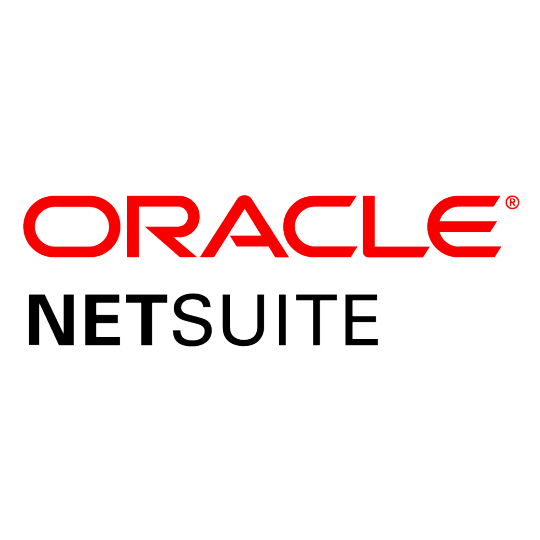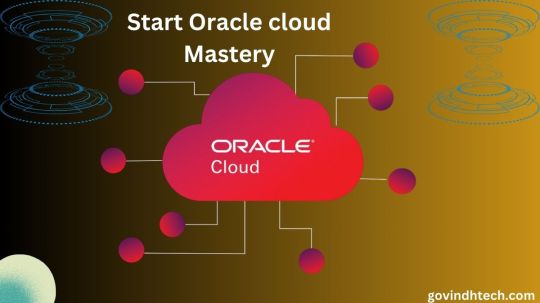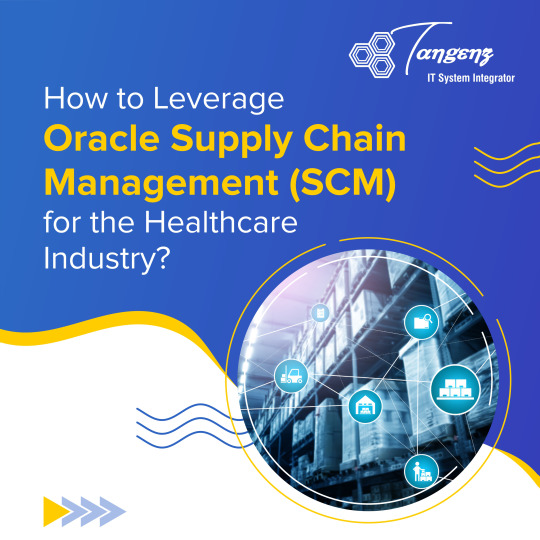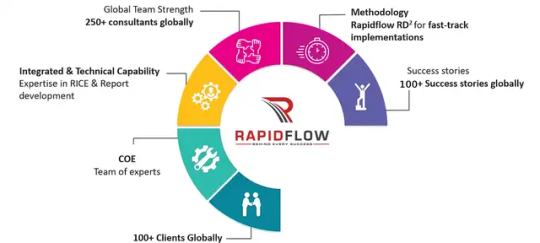#Oracle Cloud
Explore tagged Tumblr posts
Text
Oracle Financials Cloud: General Ledger 2022 Implementation Professional (1z0-1054-22) exam

0 notes
Video
youtube
Learn Oracle FCCS Advanced Topics: Mastering Equity Pickup Processes| Or...
0 notes
Text
Oracle Cloud Infrastructure vs. Competitors: What Makes It Stand Out?
In the fast-evolving world of cloud computing, choosing the right infrastructure is critical for driving business efficiency, scalability, and innovation. Oracle Cloud Infrastructure (OCI) has emerged as a formidable player in the market, challenging industry giants like Amazon Web Services (AWS), Microsoft Azure, and Google Cloud Platform (GCP). But what sets Oracle Cloud Solutions apart from its competitors? In this article, we take an in-depth look at the unique features, benefits, and real-world applications of OCI that make it a standout choice for enterprises.

1. Superior Performance and Cost Efficiency
One of the key differentiators of Oracle Cloud Solutions is its focus on delivering exceptional performance while maintaining cost efficiency.
Key Advantages:
High Performance: OCI’s high-speed networking and bare-metal instances provide superior processing power, ideal for data-intensive workloads like ERP and financial management.
Transparent Pricing: Oracle offers a straightforward pricing model without hidden fees, making it more cost-effective compared to competitors like AWS and Azure.
Predictable Costs: With consistent pricing across all global regions, businesses can accurately budget for cloud expenses.
Real-World Application:
An e-commerce company using OCI for ERP systems can handle peak traffic efficiently during sales seasons without incurring unexpected costs.
2. Advanced Security Features
Security is a top priority for enterprises migrating to the cloud, and Oracle Cloud Solutions excels in providing robust security measures.
Key Features:
Built-In Security: OCI includes advanced security controls like encryption, firewalls, and identity management as part of its core architecture.
Zero Trust Architecture: Oracle employs a zero trust model, ensuring strict access control and data protection.
Comprehensive Compliance: OCI adheres to global regulatory standards such as GDPR, HIPAA, and SOC.
Real-World Application:
A financial institution migrating sensitive customer data to OCI benefits from robust encryption and compliance with financial regulations, ensuring data integrity and customer trust.
3. Seamless Integration with Oracle Applications
For enterprises already using Oracle’s suite of applications, OCI offers unparalleled integration capabilities.
Key Benefits:
Optimised for Oracle Workloads: OCI is specifically designed to run Oracle’s flagship applications, including Oracle ERP Cloud, Oracle Database, and Oracle Financials, with optimal performance.
Unified Ecosystem: Seamlessly integrate enterprise software with cloud infrastructure for a cohesive IT environment.
Migration Tools: Oracle’s tools simplify the migration of on-premises workloads to the cloud.
Real-World Application:
A manufacturing company running Oracle E-Business Suite on OCI can experience faster performance, reduced latency, and streamlined operations.
4. Innovative Technologies and Automation
Oracle Cloud Infrastructure leverages cutting-edge technologies to enhance efficiency and simplify operations.
Key Innovations:
AI and ML Integration: Built-in AI tools enable predictive analytics, process automation, and personalised user experiences.
Automation: OCI simplifies routine tasks like patch management, backups, and monitoring, reducing manual effort.
Autonomous Database: Oracle’s Autonomous Database automatically optimises performance, scales resources, and applies updates without human intervention.
Real-World Application:
A healthcare organisation uses Oracle’s Autonomous Database to analyse patient data in real time, improving decision-making and patient outcomes.
5. Flexibility and Hybrid Cloud Support
Oracle Cloud Solutions stand out for their flexibility, offering hybrid cloud capabilities to meet diverse business needs.
Key Features:
Hybrid Cloud: OCI supports hybrid environments, allowing businesses to run workloads seamlessly across on-premises and cloud infrastructure.
Multi-Cloud Interoperability: Collaborations with Microsoft Azure enable enterprises to integrate OCI with Azure services, ensuring interoperability.
Customisation: Tailor OCI configurations to match specific workload requirements.
Real-World Application:
An energy company utilising hybrid cloud capabilities can keep critical systems on-premises for security while leveraging OCI for scalability.
6. Sustainability and Green IT Practices
As businesses aim to reduce their carbon footprint, Oracle Cloud Solutions lead the way in sustainability.
Key Advantages:
Energy-Efficient Data Centres: OCI’s infrastructure is designed to minimise energy consumption.
Carbon-Neutral Cloud: Oracle is committed to achieving carbon neutrality by 2025, aligning with global sustainability goals.
Paperless Operations: Digital tools reduce reliance on physical resources, supporting eco-friendly practices.
Real-World Application:
A logistics company adopting OCI can digitise supply chain processes, reducing paper usage and improving environmental sustainability.
7. Global Reach and Reliability
With a network of data centres across the globe, Oracle Cloud Infrastructure ensures reliable and low-latency services.
Key Benefits:
Global Data Centres: Oracle operates in 41 regions worldwide, with plans for further expansion.
High Availability: OCI provides robust disaster recovery and backup options to minimise downtime.
Consistent Performance: Enterprises benefit from fast and reliable services, regardless of location.
Real-World Application:
A multinational corporation uses OCI’s global data centres to deliver seamless services to customers across different continents.
Conclusion
Oracle Cloud Infrastructure stands out among competitors for its performance, security, cost efficiency, and innovative technologies. Whether it’s optimising ERP systems, integrating advanced AI tools, or supporting hybrid cloud strategies, OCI empowers businesses to achieve their digital transformation goals.
Curious about how Oracle Cloud Solutions can revolutionise your business? Let Denova Glosoft Limited help you explore tailored solutions to meet your unique needs. Contact us today to get started!
0 notes
Text
What is Fusion Cloud? An Introduction to the Future of Business Applications

In today's fast-paced digital landscape, businesses need to stay agile, scalable, and efficient. Cloud computing has become the backbone of modern enterprise solutions, offering businesses the flexibility and power to manage their operations from anywhere. One such revolutionary platform is Fusion Cloud, designed to transform and streamline business processes by integrating them into a unified cloud-based ecosystem.
This article will break down what Fusion Cloud is, its key components, and how it helps organizations thrive in a rapidly evolving market.
What is Fusion Cloud?
Fusion Cloud refers to Oracle's suite of cloud applications that encompass a variety of business functions, such as Enterprise Resource Planning (ERP), Human Capital Management (HCM), Supply Chain Management (SCM), Customer Relationship Management (CRM), and more. It is part of Oracle's broader cloud offering and is designed to offer businesses a comprehensive, integrated solution that covers everything from finance to human resources and supply chain.
At its core, Fusion Cloud combines cloud technology with advanced enterprise applications, providing businesses with a unified platform that delivers scalability, real-time insights, and automated workflows. It eliminates the need for multiple, fragmented systems by bringing everything under one roof, allowing businesses to function more efficiently and make data-driven decisions with ease.
Key Features of Fusion Cloud
Here are some of the standout features that make Fusion Cloud a top choice for modern enterprises:
Comprehensive Business Applications: Fusion Cloud encompasses a wide array of applications that cover core business functions. These include:
ERP (Enterprise Resource Planning): Automates and streamlines financial management, procurement, project management, and other back-office functions.
HCM (Human Capital Management): Manages human resources, including talent acquisition, payroll, benefits, and employee engagement.
SCM (Supply Chain Management): Oversees inventory, logistics, manufacturing, and demand forecasting for better supply chain visibility.
EPM (Enterprise Performance Management): Helps with financial planning, budgeting, and performance tracking.
CRM (Customer Relationship Management): Enhances sales, marketing, and customer service by providing a 360-degree view of customer interactions.
Cloud-Native and Modular: Fusion Cloud is a cloud-native platform, meaning it is built for the cloud from the ground up. This allows businesses to reduce infrastructure costs, scale easily, and benefit from constant updates and innovations. Its modular nature means companies can start with specific applications, such as ERP or HCM, and expand as their needs grow, without major disruptions.
AI and Machine Learning Integration: Oracle has infused AI and machine learning into Fusion Cloud, enabling businesses to automate routine tasks, uncover insights, and predict future trends. For example, AI can be used to automate financial reconciliations, enhance talent management by identifying top candidates, or optimize supply chain processes through predictive analytics.
Unified Data and Real-Time Insights: One of the most powerful aspects of Fusion Cloud is its ability to break down data silos within an organization. Instead of using separate systems for HR, finance, and customer management, Fusion Cloud integrates these functions into a single platform. This provides businesses with real-time data across their entire operation, making it easier to track performance, identify trends, and make informed decisions.
Security and Compliance: Fusion Cloud takes data security seriously. Oracle has built advanced security features into the platform, including data encryption, threat detection, and identity management. Additionally, it complies with various global regulations, such as GDPR (General Data Protection Regulation) and HIPAA (Health Insurance Portability and Accountability Act), ensuring businesses meet legal and regulatory requirements.
Key Benefits of Fusion Cloud
Scalability and Flexibility: Whether you’re a small business or a large enterprise, Fusion Cloud can scale to meet your needs. Its cloud infrastructure allows businesses to add new features, users, and resources as they grow without the need for expensive IT infrastructure.
Lower Total Cost of Ownership (TCO): By eliminating the need for on-premises hardware, maintenance, and manual updates, Fusion Cloud significantly reduces operational costs. The platform operates on a subscription-based model, where businesses pay for what they use, making it a cost-effective solution.
Improved Collaboration: With Fusion Cloud, teams across departments can collaborate more effectively. For example, finance teams can easily communicate with HR and supply chain managers through shared data and workflows, improving cross-functional coordination and decision-making.
Enhanced Decision-Making: With real-time access to data across the entire organization, leaders can make faster, more informed decisions. Fusion Cloud’s advanced analytics and reporting tools help uncover insights that drive strategy, improve efficiency, and increase profitability.
Future-Proofing Your Business: Fusion Cloud is constantly evolving. Oracle continuously releases updates, new features, and innovations, so businesses don’t need to worry about their systems becoming outdated. The platform’s flexibility and regular enhancements ensure that organizations can adapt to new business challenges and opportunities as they arise.
Use Cases of Fusion Cloud
Fusion Cloud’s versatility means it can be used across a wide range of industries and business sizes. Here are some real-world examples of how organizations use Fusion Cloud:
Retail: Retailers use Fusion Cloud to manage inventory, forecast demand, and optimize supply chain logistics to reduce costs and ensure product availability.
Manufacturing: Manufacturing companies rely on Fusion Cloud to improve production planning, manage suppliers, and track product life cycles in real-time.
Finance: Financial institutions use Fusion Cloud for real-time financial reporting, regulatory compliance, and risk management.
Healthcare: Healthcare providers use Fusion Cloud’s HCM module to manage staff, ensure regulatory compliance, and enhance patient care.
Conclusion
Fusion Cloud is more than just a cloud-based software solution; it’s a holistic platform designed to streamline, automate, and optimize various business processes. Its integration of cloud technology, AI, and real-time analytics makes it a powerful tool for companies seeking to stay competitive in today’s digital landscape.
By unifying ERP, HCM, SCM, CRM, and more into a single platform, Fusion Cloud eliminates inefficiencies, improves decision-making, and empowers businesses to grow and innovate. Whether you’re looking to optimize your financial operations, enhance your supply chain, or engage your workforce more effectively, Fusion Cloud offers the flexibility and scalability to meet your needs.
As businesses continue to migrate to the cloud, adopting a solution like Fusion Cloud can be a game-changer in ensuring operational excellence and driving future success. To Your bright future join Oracle Fusion Financials.
#Oracle Cloud#Fusion Financials#Oracle Fusion Financial#Oracle Fusion Cloud Erp#Oracle Fusion Cloud#erptree#erptraining#careergrowth#jobguarantee#financejobs#hyderabadtraining#oraclefusionfinancials#oraclefusion#financecareers#100jobguarantee
0 notes
Text
Optimizing Oracle Cloud Integration with Test Automation
Modern corporations that want to smooth out their IT operations and improve their business procedures must use Oracle Cloud Integration. With Oracle Cloud Integration, organizations can ensure the connection of different applications, services or data sources to form one effective and consolidated system. So, this integration maintains the smooth flow of data and real-time information exchange on…
#automation tools#cloud services#efficiency improvements#integration testing#oracle cloud#oracle cloud integration#Performance Testing#Quality Assurance#test automation
0 notes
Text
NetSuite Integrated Shipping Software
Multi-Carrier Shipping for Oracle Cloud, E- Business Suite & Oracle SCM-OTM
Designed for Oracle users, the seamless integration of our multi-carrier shipping software with your Oracle system is achieved through API connectivity. Our software effortlessly interacts with Oracle (OTM), extracting essential order and customer details while providing shipping specifics, carrier options, and tracking insights in exchange. This bidirectional integration ensures automated, accurate, and synchronized shipping operations, ensuring a streamlined shipping process within the Oracle framework.
Learn more: https://piyovi.com/shipping-software-for-oracle/

NetSuite Shipping Software Integration
#shipping software#logistics software#cloud shipping#shipping solutions#supply chain#shipping system#tms#tracking software#Oracle#NetSuite#Shipping Integration#NetSuite Integrated Shipping#Oracle Cloud#Cloud TMS
0 notes
Text
Start Oracle cloud Mastery: The Complete Implementation Guide

Effective Oracle cloud implementation guide
With Oracle, one of the world’s leading ERP tools, companies can transform their business processes and boost operational efficiency. Large and small companies are digitizing and managing massive data sets. Oracle’s ERP system streamlines business processes and reduces costs, using information to help organizations make better decisions in fast-changing environments.
It serves 430,000 customers in 175 countries and solves thousands of use cases. Few Oracle Cloud ERP implementations are alike due to its high configurability. The platform has modernized and unified major financial firms’ IT ecosystems, simplified HCM across subsidiaries, and optimized reporting processes in complex healthcare settings.
Supply chain management and human resources are integrated and unified by the software, giving an organization a holistic view of its operations and breaking down data silos. Oracle cloud simplifies routine tasks with automation to boost efficiency. The platform’s advanced reporting gives organizations real-time performance insights to make quick, data-driven decisions.
Before Oracle was implemented
Implementing Oracle cloud can seem daunting. The process can take years, but some companies have saved tens of millions of US dollars by adopting it. Oracle’s unique cloud solutions can reduce costs and streamline operations for any size business with careful planning and organizational strategy.
Whether a company wants to use Oracle for finance or HR or the entire cloud, it must plan carefully. Organizations undergoing a digital transformation must visualize how an ERP system will integrate with all business operations.
Business leaders should ask these questions before adopting Oracle:
What data or regulatory requirements does my company have? Oracle ERP implementation is simpler when deployed entirely on the cloud, but some organizations have regulatory or data residency requirements that require on-site data storage or dedicated clouds. Choose between a hybrid cloud solution with on-premises data storage or a “air-gapped” private cloud.
Which Oracle modules will my company use? Oracle provides complete ERP solutions for specific use cases. These include Oracle SCM, HCM, and Procurement for supply chain, human capital, and procure-to-pay management. The company’s E-Business Suite includes industry-specific apps. Research pricing and choose modules that fit your company.
Is my company picking an implementation partner? An experienced, Oracle-endorsed specialist can streamline implementation and lower adoption costs. Research implementation partner options and choose an experienced Oracle cloud implementation firm from the Oracle Partner Network.
Oracle implementation planning
Planning is essential to Oracle Cloud ERP implementation, even more so than deployment. Many stakeholders, department heads, and IT partners will need to contribute to the planning process. Organizations should research each module, choose the best Oracle edition for their business needs, and determine the software’s system requirements.
Project planning aims to turn a deep understanding of an organization’s business requirements into an Oracle migration and implementation blueprint. Define the implementation project’s goal, scope, timeline, budget, and risk management plan. Choose which data to migrate now, as some older data may be best stored in a secure archive. Consider what user training will be provided before and after deployment.
Oracle’s Unified Method (OUM) has provided a full lifecycle approach to ERP software implementation since 2006. Consider training an internal team on OUM or hiring an Oracle Partner Network expert for complex projects.
Oracle recommends five information categories for planning:
This blueprint will include implementation project information. It will outline the project’s mission, roadmap to Oracle adoption, budget, staffing, timeline, and risk assessment. Software and hardware installation requirements will be included if the project involves on-premises data storage.
The project team:
Oracle implementation requires a project manager and input from business partners and on-site employees familiar with the business processes to be migrated. Create a cross-collaborative implementation team with clear roles and identify key stakeholders to consult and test the system.
Designing the project This phase of planning assesses which applications will be deployed, which third-party systems must be integrated, and how migration will affect business operations. It will also specify user or user group requirements and data structure.
Launching the project This details how and when the new system will be implemented. Organizations should determine which departments, locations, and orders the new system will cover. This phase of planning includes projected project milestones and system metrics after launch.
Communication about projects:
Effective project management includes a detailed plan to educate employees on Oracle’s benefits and use cases from the start. Change management and internal team engagement are crucial for organizations.
System implementation for Oracle
After the project management team is formed and detailed planning is complete, implementation can begin. This phase configures the platform to meet business needs and migrates core data. Oracle cloud provides many templates for item definition during data cataloging and cloud migration.
Oracle usually refers to implementation steps as CIDER:
Oracle is highly configurable and can be used for many core business activities. Organizations define user roles and data architecture during configuration.
Oracle merges with third-party and legacy IT systems during this phase. The project implementation team closely collaborates with IT to merge all necessary systems. To connect applications and data sources, organizations can use Oracle’s cloud integration platform or Oracle Cloud Marketplace.
Conversion and migration of data occur here. Some hardware data may be cloud-stored. All relevant data should be extracted and converted before loading into the system.
Extensions:
After migrating data, organizations can import and configure any of Oracle’s many SaaS applications and extensions.
Reports:
Oracle Cloud ERP has many business-case-specific reports. In this phase of implementation, organizations should decide which reports to capture intermittently and which data to visualize using the platform’s real-time monitoring dashboards.
Oracle system verification
Caesars Entertainment discovered the value of extensive testing when it moved its financial operations to Oracle Fusion Cloud. Caesars’ Vice President of finance transformation recently stressed the importance of giving testing your “undivided attention” and involving partners and suppliers. He advised testing applications under “extreme condition” to avoid surprises when the system went live.
System testing must be frequent and extensive before go-live for a successful Oracle implementation. On launch, accurate, clean data and workflows prevent disruptions and downtime.
To ensure data accuracy, organizations should test these variables:
Data archive: Securely archive and easily access older data that may not have been imported to Oracle.
Make sure migrated data is clean, correct, and current. Verify that data follows the dedicated hierarchy.
Responsibility and roles: Input all identifications and company roles and map their relationships.
Security: Store sensitive data properly. Get rid of unnecessary data.
Workflows: Test primary and branch workflow paths for each case to verify every workflow.
User acceptance allows key stakeholders to provide feedback after testing. This process should include executives, department heads, and other team members who will use and teach Oracle. An Oracle system component that doesn’t meet stakeholder expectations or the planning blueprint must be fixed and re-examined to ensure the implementation process meets expectations.
Oracle system preparation and delivery
After extensive testing and user acceptance, final implementation begins. Proper internal communication during preparation and delivery will ensure a smooth rollout. Organizations should prepare systems, users, and the organization for full implementation. This stage is useful for making a final list of issues to fix. Team members can receive passwords and usernames. End-user training and business channel feedback sessions should be scheduled in the weeks before and after go-live.
If all these steps are taken and team members are informed about the new system’s best practices and use cases, deployment should go smoothly. In this phase, the IT and project teams should monitor system performance and key metrics from the planning stage. User and stakeholder feedback will help identify issues before they happen and ensure the system works properly. After deployment, a celebration is a good way to thank the team and get early system user feedback.
Oracle, IBM
IBM has been a major Oracle partner for nearly 40 years. Over 10,000 Oracle cloud consultants have helped clients complete 6,500 Oracle projects. IBM provides Oracle services and consulting that includes a roadmap for cloud transformation investment, from consulting to cloud implementation to management.
Read more on Govindhtech.com
0 notes
Text

want to know more? visit : https://tangenz.com/
0 notes
Text
0 notes
Text

#oracle#oracle services#oracle erp service providers#oracle cloud services#business automation services#robotic process automation#oracle integration cloud#oracle ebs#rapidflow#oracle cloud#ezintegrations#advanced supply chain planning#oracle solutions#oracle partners#best oracle services providers
1 note
·
View note
Text
Digital nomads are on the rise: An Oracle Fusion Cloud HCM POV
want to learn more? visit : https://tangenz.com/digital-nomads-are-on-the-rise-an-oracle-fusion-cloud-hcm-pov/
0 notes
Text
Adapting to Change - How Oracle Cloud Solutions Drive Business Transformation
Oracle has been a pioneer in pushing the boundaries of technology, opening new horizons of what all can be achieved with it. As the market looked to optimize resources and boost ROI in all areas of business, Oracle created industry-leading ERP solutions that helped organizations of all sizes across the globe optimize resource utilization and scale to new heights. As the pandemic hit us, some organizations were able to continue delivering stellar results thanks to cloud based technologies which allowed for everything from remote work for employees to remote management of projects and resources. Now as the world shifts towards AI and cloud-based technologies, Oracle Cloud is once again leading the charge with a wide range of highly specialized solutions, all designed to help companies meet their specific requirements and compete with other leading organizations in the world with cutting-edge technology.
Read more here.
0 notes
Video
youtube
Financial Planning in Excel: Forecasting and Discounted Cash Flow Techni...
0 notes
Text
https://www.mastek.com/services/oracle/cx-cloud/
Why to choose Mastek as your Oracle CX Partner?
Mastek's deep expertise in implementing Oracle CX solutions helps you to build lasting value- driven customer relationships. As a leading Oracle CX partner, we serve global customers various industry verticals.
0 notes
Text
Jason had been acting strange lately, something everyone except him seemed to notice. It started with Jason bringing Tim a full home-cooked meal into his nest and insisting he needed to eat something decent and wouldn't let him get back to the case he was obsessing over until he did.
Dick got called "Big Wing" for the first time in a while and even got hugged and spun around. He nearly cried.
Bruce keeps getting called Dad. He also nearly cries. He actually does cry when Jason, half asleep, mutters a soft, "love you"
Cass took advantage of Jason's good mood to invite him to chat with her and Steph on a picnic where they both tried to figure out why he's so happy and buy time for Barbara to look through all the places Jason had been and make sure he didn't run foul of a rogue or something.
It didn't take her too long to find out all of this started soon after a party he was invited to via one of his former goons where Jason got drunk and left with an equally drunk guy.
Appearently Jason got laid but the guy disappeared soon after. Whats more mysterious is that this Daniel (Danny) Nightengale was a fake identity and they had no idea who- or what- he really was or what effect he was having on Jason.
Damian made the mistake of insulting this guy and it took Bruce, Dick, Tim and Cass working together to pull a pit raged Jason off of him.
Yeah.
They needed to find this guy.
Plot twist: Jason unknowingly fed on Dannys energy and accidentally got thralled
#fanfiction prompts#prompts#dp x dc#danny phantom#danny fenton#batman#jason todd/danny fenton#dead on main#double dead#tim drake#barbara gordon#oracle#robin#red robin#damian wayne#bruce wayne#the bats ruled out cloning but not mind control so guess what they think this is?#jason: acting happy and on cloud nine#batfam: is this mind control?#danny is just out there#minding his own business and doing mundane stuff while the bats search for him and comically juuust miss him#plot twist: jason fed off of dannys energy unintentionally and accidentally became dannys thrall#or thall adjacent#idk anything about thralls really. sorry.
5K notes
·
View notes
